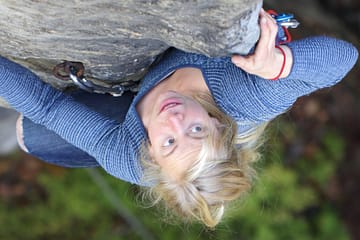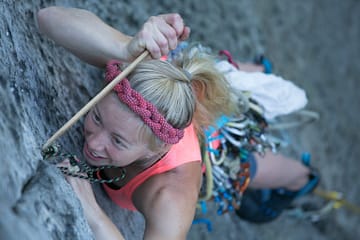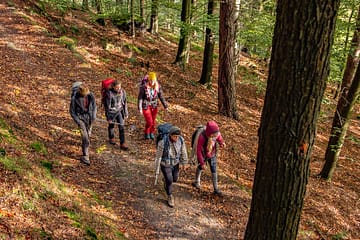“A hop, skip and a jump away from Kalymnos, Datça is a perfect winter climbing destination—with the added benefit of being just outside the Schengen Zone. Intermediate to hard sport climbing in an overhung tufa paradise is the main entrée, with a side of technical limestone face climbing. The climbing is scattered across a dozen sectors in the hills above the coastline.”
– My words from the article on Moja Gear.com
Updates as of January 2020
Inflation: The last four years have not been kind to the Turkish economy. Inflation, import taxes, and an overall decrease in tourism mean that some things are more expensive while others are cheaper. The prices for accommodation and rental cars have both gone up, while prices for locally grown food and services have decreased. In January 2020, the conversion rate was 1 USD to 6 Turkish Lira.
Where to stay: Ertem Apart Hotel has fully equipped apartments and offers a discount for climbers. Prices are around 20 EUR a night for a two-bedroom apartment. Contact Murat via his website.
Routes: New lines have gone up! Some info is available at the Crag website.
Below, you’ll find my original article from 2017. It was published on Moja Gear.com, but as the site is now offline, I’ve added the information here.
OVERVIEW
Turkey’s newest crag has some of the best lines in the country. A hop, skip and a jump away from Kalymnos, Datça is a perfect winter climbing destination — with the added benefit of being just outside the Schengen Zone. Intermediate to hard sport climbing in an overhung tufa paradise is the main entree, with a side of technical limestone face climbing. The climbing is scattered across a dozen sectors in the hills above the coastline.
Datça proper is a whitewashed seaside town where waves of retired Turkish vacationers wash up in the summer months. The city of 20,000 is located half way down the lanky peninsula that separates the Aegean Sea from the Meditteranean. Most of the 300 sport routes are located about 10km up the hill from the waterfront near Hızırşah village. While there are some multi-pitch and adventure trad opportunities, Datça is all about hard sport climbing.
The peninsula’s southern coastline is varied and speckled with coves. The mountains above the sea alternate between olive and almond orchards and pine forests. There’s a lot of nature and not so many people: it’s good to go with a friend or a group – if you come to Turkey without a partner, Geyikbayırı is the easiest place to connect with travelers, many of whom have heard of Datça and are looking for the right reason to go (that’s you!).
CLIMBING
Since bolting only started in 2012, there is much more rock than there are routes. The routes are fresh; it’s peaceful and relatively few climbers visit compared to nearby Kalymnos or Geyikbayırı. There’s enough traffic that the routes don’t need cleaning, but not enough for anything to be polished (yet).
Most of the climbing is in and around the big Can Baba cave. While the warm ups in Can Baba are 6c, the sectors left and right of the massive overhanging tufa wonderland feature five star 6a routes on ramps of premium grey limestone sprinkled with purple flowers.
Datça is great for those looking to improve their tufa technique and endurance. Many routes require a myriad of movements. Imagine climbing out of a techy microcrimp crux into a juggy tufa rest, or slapping powerfully at sloped colonettes before shaking out on a deep pocket.
BEST SEASON
The best seasons are fall, winter, and spring: September – May. Spring and early fall can be risky with humidity or seepage. In the winter, watch out: the peninsula is famous for its wind, so a 10-degree C day might feel like -5 in the windy shade of the cave.
CLIMBING GRADE RANGE
While there’s something for everyone, about half the routes are between 7b and 8b+ (5.12b and 5.14a).
8% 6a and easier
40% of the routes are 6a+- 7a+
45% 7b-8b+
7% 8b+ to 9b
BEST LOCAL SPOT
The waterfronts and beaches are lined with restaurants and cafés. Head to La Dulcinea for coffee, delicious food, and wifi with a wonderful view. The super friendly owner Özlem speaks English and has been known to make a few calls for climbers trying to find a place to rent. La Dulcinea is above the Roll Bar, and just a few doors down from a fantastically multilingual new and used bookstore. On the other side of downtown, desserts at Mira Café are unparalleled.
TOP CLIMBS IN THE AREA
Full Pocket (6a 5.10b) in Uzak Zurafa. Mega classic with a great view. Most of the year you have to share the big pockets with tiny purple flowers, making the route even more enjoyable.
Pocket Dog (6c 5.11c) in Uzak Zurafa. Located in the center of the massive orange solid hunk of wall right of the big cave, Pocket Dog is the best of the grade in the area. A lot of smaller holds on nearly vertical rock mean it’s still fun two months and 50 laps later.
Sucuk Power (7c 5.12d) in Sucuk. A tough and powerful 7c. Impossible to miss when you arrive in the sector because it looks so dang sweet. A real classic.
Black Hole (7c+ 5.13a) in Can Baba. This route is made from the same stuff as dreams. From delicate crimping, powerful pocket pulling, to tufa jugs, the route has a little of everything. If you’re feeling good at the anchor, you can continue up to climb Fire in the Black Hole (8a 5.13b) and it’s 8b extension. Make sure your rope is long enough!
Ucan Balık (8a 5.13b) in Balık. If you can find a static solution in the crux, just let me know. The name means flying fish, see for yourself why!
Kurban (8a+ 5.13c) in Can Baba. After the boulder crux of the first pitch (Bouldervar 7c+), the route takes you on a 40m tufa journey. Test your endurance and your kneebar IQ.
Karia Yolu Multipitch (6a 5.10b) on the Karia Yolu Rock. This sport multipitch goes up the right side of the big hunk of rock seen from the cave. The fifth pitch (5c+) is protected only by slings through sandclocks and features stunning views. The walk off the top means it’s perfect for sport climbers with only one rope and no rappelling experience. Do it and bring 15 draws.
BEST KEPT SECRET
Secret Nr. 1: There’s more than just Can Baba. Check out Domuzbuku, Karain, Sucuk, and Balik sectors. There’s also the Kanyon sector on the north side of the peninsula which is rumored to have incredible potential.
Secret Nr. 2: Mira Café’s desserts.
Secret Nr. 3: Knidos ruins at the end of the peninsula are the remnants of a massive city. Drive through Mesudiye instead of straight, you’ll spend more time sea-side.
GRADING
As the area is quite new, some grades haven’t been confirmed. Tufa experts may find the midrange routes (7a+ to 7b+) to be quite soft compared to the rest of the sector.
WHERE TO STAY
Unfortunately, there are no climber-specific accommodations at the moment. Contact the folks on the Climbing Datça Facebook group for current information and for a guidebook. There’s a picnic area near the sectors where camping possible but there is no water or amenities (read: no toilets)! With a car or van, there are a million cozy coves on both sides of the peninsula and decent parking near the climbing.
For apartment rentals by day or week, check out the Yavuz Apart Hotel or the Maya Apart Hotel in the city center. Prices can be bargained down to at least 20 TL per person per day in the winter.
OTHER INFORMATION
There’s a guidebook! Contact Onur on the Facebook group ‘Climbing Datça’ for the latest edition.
Some climbers come for two weeks of climbing and two weeks of kite surfing. From snorkeling in Aquarium Bay to wine tasting, there are endless rest day activities.
There is a shuttle bus from Dalaman airport to Marmaris (15TL), where there are regular busses to Datça (total time from the airport to Datça is about 3 hours). However, the area can be best enjoyed with your own method of transportation. If you don’t want to rent a car at the airport, there are also scooter rentals in the town itself at Karena Rent A Car; remember prices are always flexible!


